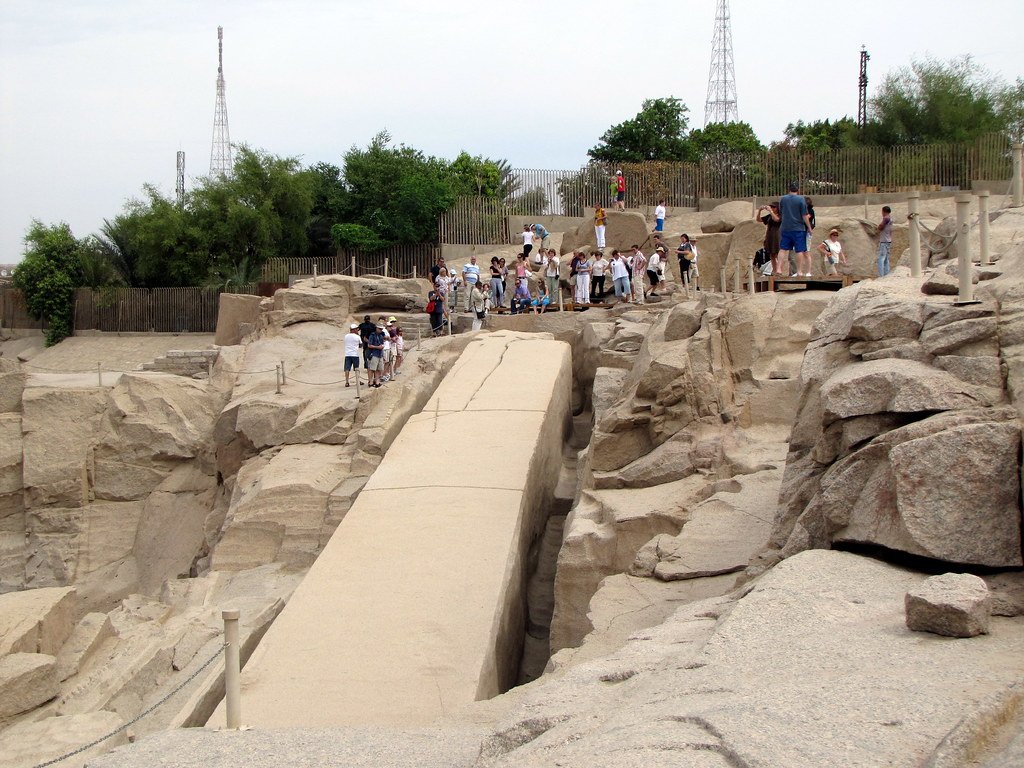We’re living through one of the most fascinating mysteries in Earth science right now. Scientists suggest that another reversal may be underway, potentially starting within 500 to 1,000 years, and the last reversal occurred 780,000 years ago. Meanwhile, our planet’s magnetic north pole is racing toward Siberia at unprecedented speeds, moving at speeds that have varied significantly, with recent measurements showing deceleration after decades of acceleration. In the past 200 years, Earth’s magnetic field has weakened about nine percent on a global average, though some people cite this as “evidence” a pole reversal is imminent, but scientists have no reason to believe so. Yet the signs around us tell a story that’s both reassuring and unsettling. Let’s dive into what’s really happening beneath our feet and above our heads.
The Hidden Clues in Earth’s Magnetic Chaos
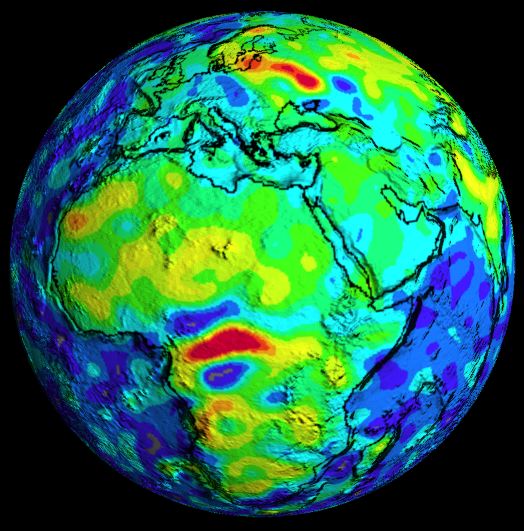
The most dramatic evidence of magnetic upheaval isn’t found in dusty geology textbooks – it’s happening right now in space. Over South America and the southern Atlantic ocean, an unusually weak spot in the field, called the South Atlantic Anomaly (SAA), allows particles to dip much closer to the surface, and particle radiation in the SAA can knock out onboard computers and interfere with the data collection of satellites that pass through it. This isn’t some abstract scientific curiosity. NASA has reported that modern laptop computers have crashed when Space Shuttle flights passed through the anomaly, and spacecraft routinely experience technical issues when passing through this region.
Using 11 years of magnetic field measurements from the European Space Agency’s Swarm satellite constellation, scientists have discovered that the weak region in Earth’s magnetic field over the South Atlantic has expanded by an area nearly half the size of continental Europe since 2014. What makes this particularly eerie is how it’s behaving. Scientists have just published a study revealing that not only has the anomaly expanded eastward, it has actually been weakening more quickly since 2020.
The Great Magnetic North Migration

If you think magnetic north staying put is normal, think again. From 1999 to 2005, Earth’s magnetic north pole went from shifting nine miles at most each year to as much as 37 miles in a year. In 1990, its northern drift accelerated, increasing from 9.3 miles per year to 34.2 miles per year. This isn’t gradual geological change – this is magnetic chaos in fast forward.
Magnetic north has been moving slowly around Canada since the 1500s but, in the past 20 years, it accelerated towards Siberia, increasing in speed every year until about five years ago, when it suddenly decelerated from 50 to 35 kilometers per year, which is the biggest deceleration in speed we’ve ever seen. Researchers from the United Kingdom and Denmark uncovered the reason for this mysterious movement: two writhing lobes of magnetic force, duking it out near Earth’s core. Think of it as a planetary tug of war happening 3,000 kilometers beneath your feet.
Ancient Warnings from Rock and Fire

The geological record tells us magnetic reversals aren’t rare – they’re routine. Paleomagnetic records tell us Earth’s magnetic poles have reversed 183 times in the last 83 million years, and at least several hundred times in the past 160 million years, with time intervals between reversals fluctuating widely but averaging about 300,000 years. Paleomagnetic records show hundreds of reversals over geological time, with intervals averaging several hundred thousand years, but the last one was 780,000 years ago, and some say that we’re overdue for the next one.
Sometimes, events are excursions rather than full reversals, when the field shifts for several hundred years and then returns to its original orientation, like the Laschamps event about 41,000 years ago. During the Laschamps event, which lasted several hundred years, the field weakened to only 5% of its normal strength. Scientists recently made this ancient drama audible – they’ve actually recreated the sound of that magnetic flip 41,000 years ago, and it’s as haunting as you’d expect.
The Technology Under Siege

Modern civilization has never experienced a magnetic reversal, and honestly, we’re not prepared. While life on Earth has weathered multiple magnetic reversals over more than 100 million years, “we’ve never experienced a reversal when modern technology was present,” and “It would certainly be an interesting time for engineers to adapt our technology to, but hopefully one they’d have a slow, centuries-long build up to, rather than any sudden change.”
The South Atlantic Anomaly is giving us a preview of what’s coming. The International Space Station, which crosses the region on every orbit, reports periodic instrument resets and data loss. Spacecraft passing through the anomaly routinely power down non-essential systems to limit potential damage, and NASA’s Ionospheric Connection Explorer and several CubeSat missions have altered data collection routines when passing over the zone. Every airline, every GPS system, every satellite network would need fundamental recalibration if a full reversal occurred.
The Core’s Violent Ballet
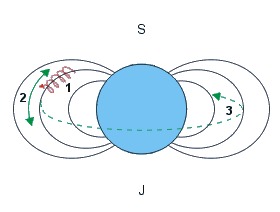
Earth’s magnetic field is largely generated by a global ocean of molten, swirling liquid iron that makes up the outer core around 3000 km beneath our feet, acting like a spinning conductor in a bicycle dynamo to create electrical currents, which in turn generate our continuously changing electromagnetic field. Recent discoveries reveal something disturbing happening down there.
Normally we’d expect to see magnetic field lines coming out of the core in the southern hemisphere, but beneath the South Atlantic Anomaly, scientists see unexpected areas where the magnetic field, instead of coming out of the core, goes back into the core. Researchers from Kyoto, Nagoya, and Kyushu Universities found that while the polar regions retain the expected polarity, the equatorial areas flip it entirely. It’s as if Earth’s magnetic engine is running in reverse gear in certain places.
Predictive Science Meets Cosmic Roulette
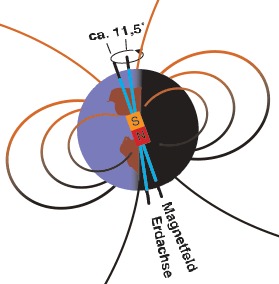
In a groundbreaking study published on February 3, 2024, a team of scientists led by Daniil Tolmachev introduced a novel approach to predicting Earth’s magnetic field reversals, utilizing mathematical modeling to identify early warning signals of these geomagnetic phenomena, potentially offering a new paradigm in understanding and preparing for their consequences on technology and life on Earth.
Through this methodology, the team has discovered patterns in magnetic and hydrodynamic harmonics that could serve as precursors to polarity switches, offering a predictive insight into when these reversals might occur. However, the challenge remains immense. No one knows exactly when the next pole reversal may occur, but scientists know they don’t happen overnight: they take place over hundreds to thousands of years.
Life in the Magnetic Crossfire

Here’s what might surprise you: Plant and animal fossils from the period of the last major pole reversal don’t show any big changes, deep ocean sediment samples indicate glacial activity was stable, and geologic and fossil records from previous reversals show nothing remarkable, such as doomsday events or major extinctions. Life is remarkably resilient.
Yet there are concerning implications. During a polar flip, animals that migrate using the magnetic field to find their way, such as whales, butterflies, sea turtles and many species of migratory birds, could be affected. With global climate change being a potential consequence, it’s speculated the extinction of Australia’s megafauna as well as changes in human cave use may have been associated with the Laschamps event. The cosmic radiation exposure during weakened magnetic periods could fundamentally alter atmospheric chemistry.
The Future Landscape of Magnetic Uncertainty
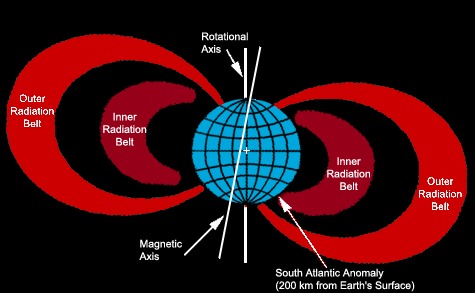
What does the next century hold? While the anomaly is not linked to an imminent magnetic pole reversal, scientists consider its rapid development over recent decades to be unusual, and efforts to model its future path now factor in the latest satellite tracking data to reduce the risk of unexpected radiation exposure for upcoming missions.
NASA’s most recent models show an active zone that is slowly creeping west and stretching across more of the Southern Hemisphere, leading to mounting speculation about whether we are witnessing the early signs of a global magnetic shift or even a pole reversal – events that have occurred throughout Earth’s history, but are not well understood in real time. The magnetic north pole’s recent deceleration adds another layer of mystery. Scientists expect that the drift toward Russia will continue to slow, though there is some uncertainty about how long the slowdown will persist and if it will continue at its current pace, as “It could change (its) rate, or even speed up again.”
While a complete magnetic flip in our lifetime seems unlikely, the signs are unmistakable that we’re living through a period of unprecedented magnetic instability. The South Atlantic Anomaly continues expanding, our magnetic poles are on the move, and deep in Earth’s core, forces beyond our control are reshaping the invisible shield that protects our planet. Perhaps the real question isn’t whether Earth’s magnetic field will flip in our lifetime, but whether we’ll be ready when it does. What would you do if your compass suddenly pointed in the wrong direction?

Suhail Ahmed is a passionate digital professional and nature enthusiast with over 8 years of experience in content strategy, SEO, web development, and digital operations. Alongside his freelance journey, Suhail actively contributes to nature and wildlife platforms like Discover Wildlife, where he channels his curiosity for the planet into engaging, educational storytelling.
With a strong background in managing digital ecosystems — from ecommerce stores and WordPress websites to social media and automation — Suhail merges technical precision with creative insight. His content reflects a rare balance: SEO-friendly yet deeply human, data-informed yet emotionally resonant.
Driven by a love for discovery and storytelling, Suhail believes in using digital platforms to amplify causes that matter — especially those protecting Earth’s biodiversity and inspiring sustainable living. Whether he’s managing online projects or crafting wildlife content, his goal remains the same: to inform, inspire, and leave a positive digital footprint.



